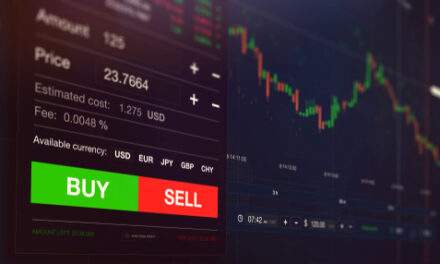If you’re reading this right now, chances are good you’re an options trader.And if that’s the case, I’m almost 100% certain you chose “speculation” as your objective when opening a brokerage account.Us options traders want faster, larger gains. We’re willing to speculate, and risk losing on some trades, to achieve that goal.Traditional investors, on the other hand, choose objectives like “income” or “growth.”They don’t mind waiting years for their portfolio to go up, because they think buying and holding stocks minimizes their risk.In reality, when it comes to risk management, speculating on options is a far more conservative strategy.
That might sound backwards to you, but let me explain…
Lower Risk, Higher Gains
Options are known for delivering large gains in a short amount of time. Many people assume this means they come with higher risk.But options are actually an effective risk management tool. Because when you buy options, you can never lose more than you put in.Of course, this is also true for stocks. Stocks can’t fall lower than zero.But, relative to their profit potential, risks in dollars are much greater for stocks.Let’s break this down…If you buy 100 shares of stock for $100 a share, you could potentially lose $10,000. This is highly unlikely. It would mean the stock fell all the way to zero.But in a market like this, a stock could easily fall 20%. That means you would lose $2,000.Instead, let’s say you buy a $3 option on that stock. Each options contract covers 100 shares, for a total of $300.No matter how far the stock falls, your risk is capped at $300. But you paid a lot less for roughly the same amount of profit potential.So we’re looking at $10,000 to own 100 shares of stock versus $300 to trade 100 shares of stock.And a loss of $2,000 on a probable 20% drop, versus a capped loss of $300 on your options trade even if it goes to zero.Now, let’s suppose the stock rallies 20%. If you’re holding 100 shares, your capital increases by 20% or $2,000.But if you bought an option, a 20% gain could mean your investment increases 100% or more.This is because options use leverage. With leverage, your account has a large amount of exposure for a small amount of money. An option that costs $300 could benefit from price moves on $10,000 worth of stock.These low costs make options more accessible to traders with limited starting capital. They also allow us to more easily diversify across several stocks.But just because options are more accessible, that doesn’t mean you should jump in headfirst.To trade options effectively, you need a plan…
Our Best Bear Market Plan
Before you start trading options, you should decide how you’ll pick your trades, when you’ll sell them, and what rules you’ll follow to manage your risk. For those new to options, this can sound overwhelming. After all, there are a number of strategies and indicators to choose from.That’s why we’re dedicated to bringing you the best options education and strategies available.And right now, Andrew Keene’s Trade Kings is at the top of that list.Every morning for an hour after the opening bell, Andrew opens the doors to his live trade room.Members watch as Andrew monitors his scanners in real time, sending out every trade signal that meets his strict criteria.Just this week, these signals turned into gains of 44% in 16 minutes, and 100% in one day, for Andrew’s Trade Room participants.That’s this week alone. And these winners aren’t anomalies.Andrew’s won on about 70% of his trades this year. It’s no wonder members of his trade room are having so much fun.That morning hour flies by when you’re cashing out on trade after trade, and during a bear market no less… There are still a number of seats available in Andrew’s trade room.Every day you delay is another missed opportunity for gains.I encourage you to go here while there’s still time, and see what Andrew has to offer.
Regards, Michael Carr, CMT, CFTeEditor, True Options Masters
Michael Carr, CMT, CFTeEditor, True Options Masters










